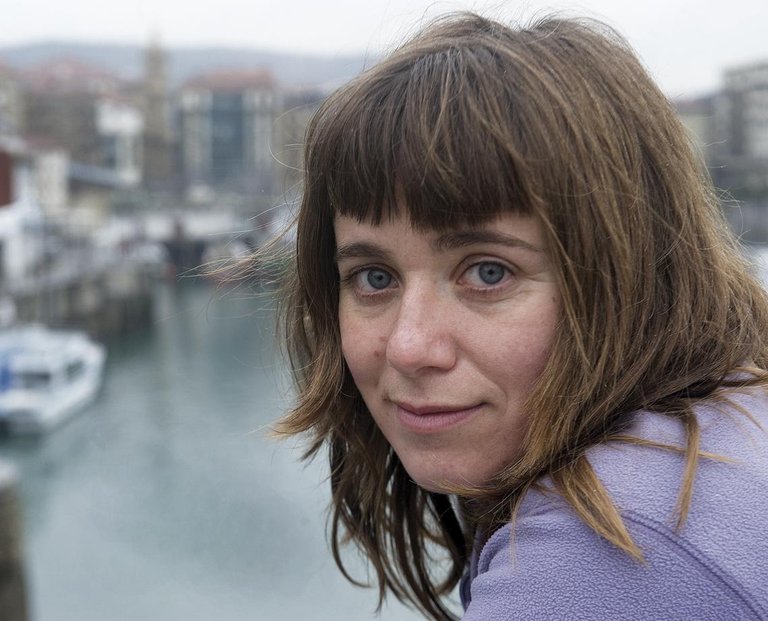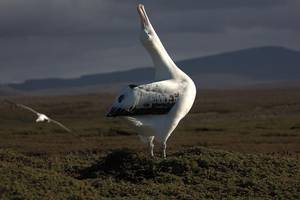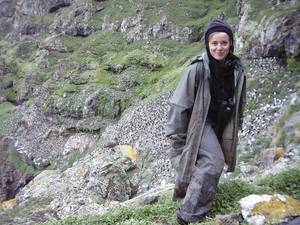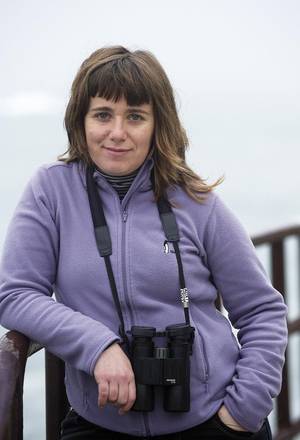"If I could go back, I would investigate the albatrosses again"

I studied marine science in Vigo and have always worked in marine ecology. It is a very extensive area because it covers all areas related to the sea: from economy, physics, geology, chemistry... everything.
Our research suggests that it will disappear for about forty years and that it is in a critical situation. Their main problem is longline fishing, so many die.
Yes, we see it. There is less and less. And we have a big problem: there is no concrete account of the population because it is very difficult. We always have to work with estimates, with approximate figures, but as this species reproduces on the sea cliffs, it is quite difficult to access the colonies.
I did my thesis in the Balearic Islands. There I was for four and a half years and we went to the seagulls colonies. However, we came to these colonies quite easily. We went by boat and kept track of the reproduction. At the beginning of the incubation we were going to count how many eggs there were in the colony; then we counted how many of those eggs came out, and when we were four months past we were going back to count how many of them had reached the conditions to fly. Thus, we followed the reproduction.
The truth is yes. It was quite spectacular. Also, I don't feel like an ornithologist, because in doing the thesis I didn't know anything about the candle. I only knew seagulls and brokenness. But life takes you to such places, and in the end it has been a very nice experience to be able to do a thesis with this species.
Once the thesis is completed, the postdoctoral phase arrives, which is any contract until the completion of the thesis and obtaining a permanent job, while the world of research is that of research. I finished the thesis five years ago, spent a year in Oviedo, Asturias, working in marine ecology. Then I spent thirteen more months in France and there I started working with the albatross. And then I went to Germany, where I also worked with the albatross, because the project was the collaboration between France and Germany.
In Germany there are no albatrosses, the truth is that the research team with data of albastros is in France, in the center CEBC-CNRS, and in Germany there is an important center, Helmotz Centre for Environmental Research, which elaborates models with this data. I went to make models of albastros movement.
France has several overseas territories, called French southern and Antarctic territories (in French, Terres australes et antarctiques françaises), with a scientific base in Antarctica and two islands in the sub-Antarctic part of the Indian Ocean, in Crozet and Kerguel, and another island in the subtropical part, Amsterdam. Scientific programs are carried out in these places through the French Polar Institute IPEV.
Yes. It was the experience of Christ. It is a great experience for anyone working with nature. If I could return again, I would return, even if I had to spend months or years. It is spectacular.
In quite special conditions. I worked on the island of Kerguel with the albatrosses of the black eyebrow ( Thalassarche melanophrys), and there, for a month and a half, we were in a small house, without water or anything. The river was nearby and we were showering every five days when we had very dirty hair (laughs). The river water was five degrees away and we ran and left. It was a pretty nice experience, not only in the biological, but also in the personal. We were three people we didn't know each other; we had to try to fix ourselves well together and that also has its nice side. In the end we were like brothers. Besides, I was the only foreigner; the other two were French. It was a good experience.
For it dawned about four in the morning. And every morning we had to go to the colony and put some devices on the back to the albatrosses to follow their travels. They were like GPS. Two days after I put on the Albatros, when I brought the food back to Chit, we took it back and took off the GPS. GPS information is downloaded to a computer and you know what the albatross has done during the trip: where it has gone, how long it has passed, how it has moved, etc. With these movements, analyzing the route, you can know where has spent most of the time and what has done.
In the Crozet islands, we studied passenger albatrosses ( Diomedea exulans). They have the longest wings, three and a half meters. A trip can last between 2 and 24 days and in a single trip can go to 3,500 kilometers from the colony. It is spectacular.
There is everything. Females, during reproduction, move mainly around the colony or head north. And the males stay around the colony or head south. Both sexes move to each side.
Yes, and the issue is that changes in wind have caused less and less time to spend caring for the nest until your partner returns. This is one of the consequences of climate change. In the 1990s they had to go further in search of food. And in the 2000s they have been getting closer. The winds are stronger, but not only that, but they have also changed places. Around the colony the wind blows even faster.
And the truth is that these albatrosses have a quite special strategy. They will not eat a certain place. There are other smaller albatrosses, yellow-nosed albatrosses ( Thalassarche chlororhynchos), which always go to frontal systems. And the strategy of Albatros passengers, on the other hand, is to travel as many places as possible to have the most probability of finding food. The less time it takes to find food, the shorter the journey and the faster they return to the nest. On the other hand, the shorter the nest care shifts, the less likely the pair will leave for food. One must always be in the nest. And if the other travels very long, the one in the nest is finished reserves and has to go to find food leaving only the egg. The lower the chance of the egg being left alone, the greater the likelihood of the kid getting ahead.
They become larger but not in size. Now they are heavier. Having to be less and less in the nest, they should use less reserves.
No one lives on these islands. There is only scientific basis. There they began to follow up in 1966 and since then many researchers have participated in this program. Right now, the program is led by the first author of our article, Henri Weimerskirch.
Yes, I have been in Gijón since July at the Spanish Oceanographic Institute. In addition to seabirds, I am also working with other hunters: dolphins, tuna, etc. We are investigating its distribution in the Cantabrian.
Well, I am 33 years old and still have no permanent work. And with the economic crisis I have a rather dark future. But it seems that Euskal Herria is one of the few people that is committed to research and Ikerbasque is promoting the hiring of doctors. Maybe within this call you can get some contract.
--> Listen to the interview with Maite Louzao on the radio program Norteko Ferrokarrilla.
--> See interview in Teknopolis
Buletina
Bidali zure helbide elektronikoa eta jaso asteroko buletina zure sarrera-ontzian














